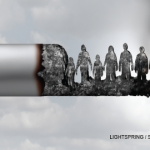The second phase launched in 1989 and expanded to include unmarried women, women with different types of nursing jobs and broader age and racial diversity. Although the first two phases of the study involved mailed questionnaires, a third phase launched in 2010 as a Web-only study and expanded to include nurses in Canada. One of Dr. Karlson’s family friends is a nurse who has participated in the study since its launch and is now 90.
When participants noted that they had been diagnosed with a rheumatic disease, the cohort’s investigators requested their medical records and blood samples. More than 10,000 women in the cohort have reported diagnoses of RA, SLE, polymyositis, dermatomyositis, Sjögren’s syndrome, scleroderma or mixed connective tissue disease, says Dr. Karlson. With medical records, investigators have confirmed up to 1,300 RA and 300 SLE cases in the cohort. Dr. Karlson, Dr. Costenbader and their colleagues studied how lifestyle factors, such as oral contraceptive use, smoking, diet, silicone breast implants, breastfeeding, vitamin D intake and obesity, affected women’s rheumatic disease risk.
“We know that there are genetic risks. RA and lupus run in families. But what explains why one sister gets RA and another one doesn’t?” says Dr. Karlson. Because it is so detailed and long-lasting, the Nurses’ Health Study allowed them to identify possible risk factors and validate them over decades. They found that smoking cigarettes increases RA risk, and that risk is still high even 20 years after a woman quits. They found that breastfeeding reduces RA risk by 40%. They found that breast implants do not increase a woman’s RA risk and that using hair dye won’t raise her lupus risk. Early age at menarche, oral contraceptive use, as well as early menopause and use of postmenopausal hormones, all were related to increased risk of developing SLE.
[Dr. Karlson & colleagues] are currently examining patterns of metabolomics profiles in the blood to determine if they are connected to rheumatic disease risk or activity.
Less Recall Bias
A participant in the Nurses’ Health Study fills out questionnaires every two years, so investigators can examine her case closely after she reports a rheumatic disease diagnosis, says Dr. Costenbader. They can look at her past data to track her lifestyle habits, such as smoking or diet. This cuts down on inaccuracies rampant in studies in which patients are asked to recall things from years before.
“This is known as recall bias. When you are newly diagnosed with a disease, you may remember things you did in the past differently,” she says. “On the other hand, as we are asking a woman every two years about her lifestyle, before she is diagnosed with a rheumatic disease, there is less recall bias.”



